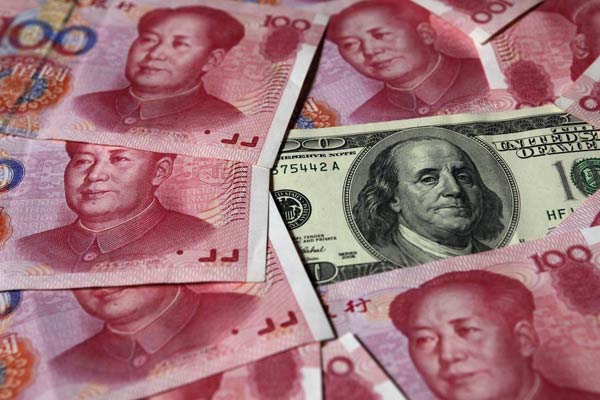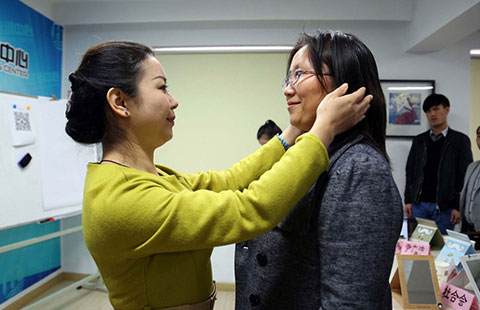PBOC signals important change in managing the exchange rate
By Wang Tao and Donna Kwok (chinadaily.com.cn) Updated: 2015-08-12 13:10
 |
|
A $100 banknote is placed next to 100 yuan banknotes in this October 16, 2010 file picture illustration taken in Beijing. [Photo/Agencies] |
According to the PBOC, this move is to increase the relevance of the daily fixing (which has stayed almost like a straight line in recent months), making it more reflective of market forces. Market has exerted persistent downward pressures on the yuan against the backdrop of weak Chinese growth, expected US Fed move and depreciation of major emerging-market currencies against the USD.
Against the backdrop of the recent informal Special Drawing Rights (SDR) discussion at the IMF, Tuesday's move is likely intended to improve the "market-driven" quality of the PBOC daily fix, so that it can qualify to be used by the IMF as a SDR reference rate. Going forward, the PBOC said it will continue to increase the "marketization" of the renminbi exchange rate, open up the FX market further with inclusion of qualified foreign entities, and gradually unite onshore-offshore renminbi exchange rate.
The move came not only after the State Council's recent call to "increase two-way flexibility" of the exchange rate, but also after another month of anemic export growth in July, deeper fall in producer prices and likely weak domestic demand.
Looking ahead, against the current depreciation pressures, if the PBOC was to closely follow the previous day's closing in setting the daily fixing rate, yuan depreciation expectations could quickly become entrenched and the renminbi could depreciate quite quickly and significantly in the coming days.
If so, that would be a sea change in China's exchange rate policy – letting the market drive down the yuan which can help support growth and fight deflationary pressure.
However, it is unlikely that the Chinese government will let only market momentum drive the yuan exchange rate from now on, as that can be quite destabilizing. The government may still want to take a relatively cautious approach on the exchange rate front. The upcoming SDR review is one consideration, and avoiding destabilizing depreciation expectations and capital outflows would be a more important one. In this context, how China sets its daily fixing and manages FX market flows in the next few days will be very telling.
Nevertheless, Tuesday's move is an important change in China's way of managing the exchange rate. Given prevailing market pressures led by expected Fed rate normalization, the yuan's significant appreciation against other major currencies in the recent past, China's disappointing export performance, and mounting deflationary pressures, the step signals a new government willingness to let the yuan slide more against the US dollar than previously. We now expect US dollar-yuan trading at about 6.5 by end 2015 estimated instead of 6.3 as previously envisaged, and 6.6 at end 2016 estimated.
Wang Tao and Donna Kwok are both UBS economists. The views do not necessarily reflect those of China Daily.
- 2015 China International Fair for Investment and Trade kicks off in Xiamen
- China's commodity imports robust in Jan-Aug period
- China stocks rebound 2.92%
- 2015 China box office already past 2014 total
- China foreign trade decline widens in August
- Interview: JP Morgan's senior executive bullish on China
- Innovation, development the focus for NZ mayors
- Lives of freelancers

















